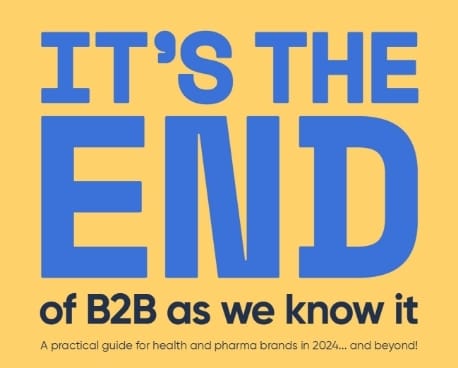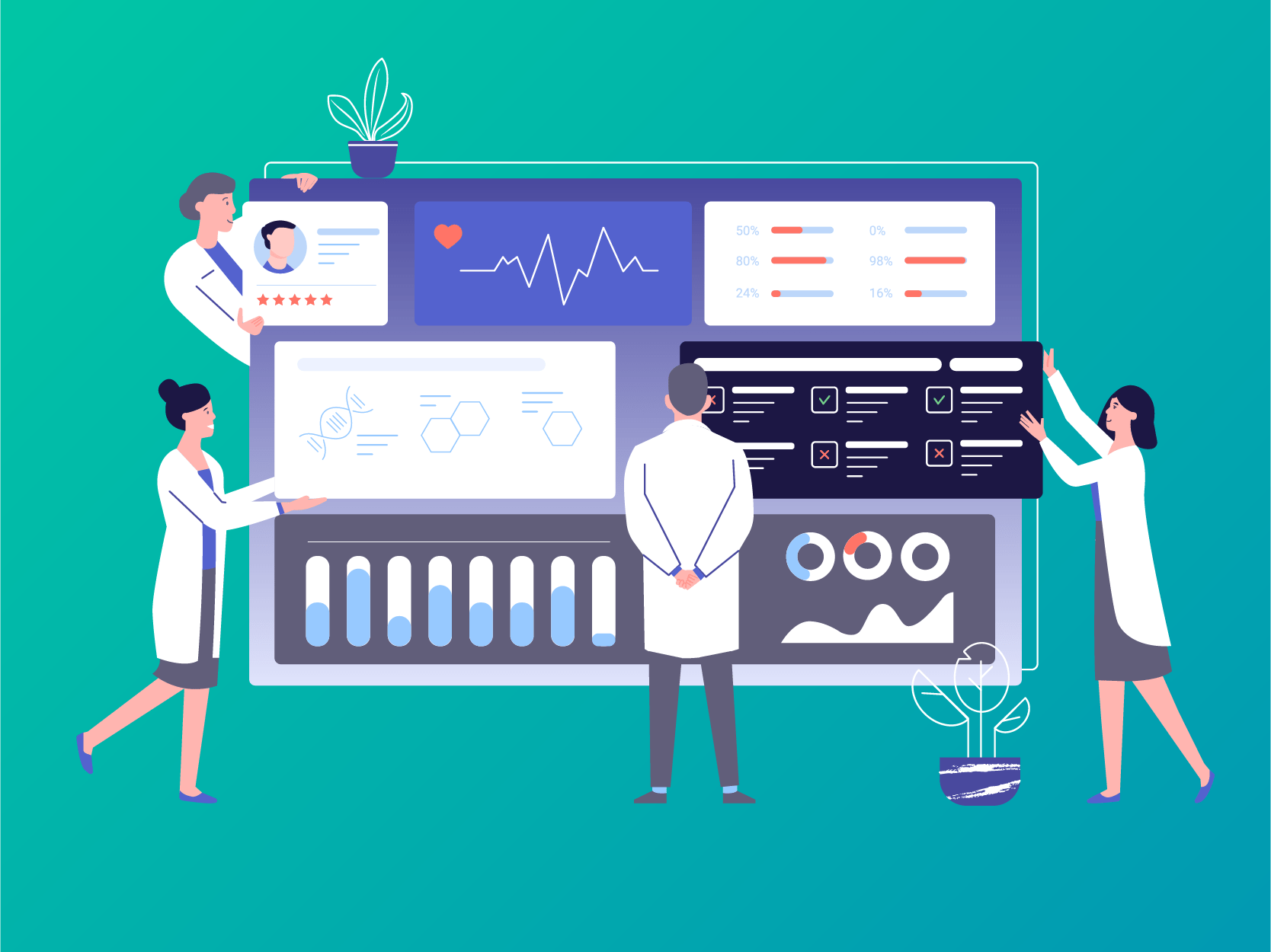Digital disruption is happening everywhere. Today we’re looking at how it is transforming the medical device industry – and why this is a good thing.
Like everything else in today’s digital world, sales of medical devices are shifting online. Although they’ve been slow to adopt this change, medical device manufacturers are starting to realise the importance of making the transition to a self-service, “direct to consumer” e-commerce model.
Even before COVID-19 upended every aspect of healthcare, sales representatives’ face-to-face presence was declining. According to a 2019 survey conducted by Decision Resources Group, only 54% of surveyed physicians reported seeing a sales rep in person (down from 67% the previous year). But procurement professionals are typically part of the internet generation, and they likely welcomed this trend. Like all healthcare professionals, they are more and more comfortable relying on their own ability to research information online. Crucially, almost half (49%) of physicians responding to the 2019 Decisions Resources survey responded that they had never had a question for a rep that could not be answered online.
The future of medical device manufacturers is digital
From a strategic standpoint, shifting from in-person sales to a self-service e-commerce model comes with multiple advantages. An online platform works 24/7, freeing up sales staff from routine transactions and leaving them more time to nurture leads and have more meaningful conversations with clients.
Looking at possible recovery scenarios for medtech companies suffering from COVID-19 disruption, influential management consulting firm McKinsey highlighted the importance of digital upscaling as key to a strategic recovery. Those medtech companies that quickly prioritise and scale new digital capabilities will be best positioned for long-term recovery and the new future of healthcare. This means rethinking old models and focusing on increasing quality digital touchpoints with clients such as webinars with key opinion leaders and shifting investment to digital media.
For medtech organisations looking for growth opportunities, an e-commerce platform will allow them to easily expand to new locations and industry areas. You don’t need feet on the ground to launch in new markets when a self-service e-commerce site can support numerous languages, currencies, and location-specific payment options.
So if implementing an e-commerce solution is critical for increasing sales and catering to procurement professionals who expect digital convenience, then what does this transformation look like?
Design a self-service e-commerce solution with the end user in mind
The best solutions are designed with the end user front and centre. That means taking a look at the unique pain points of busy procurement professionals. This user group has to source multiple pieces of equipment from various suppliers, often jumping through hoops on their end to do so.
Furthermore, medical devices are complex products. When ordering replacement parts, buyers must ensure those parts are compatible with their existing equipment. Crucially, buyers must ensure that the products they are purchasing are compliant within their industry and location. And on top of all this, they must contend with supply chain availability. The scarcity of some medical supplies during the COVID-19 pandemic will likely be fresh in the minds of many procurement professionals.
Medical device buyers are dealing with complicated, often expensive, life-saving devices. Anything that you can do to make their jobs easier and give them peace of mind is a key differentiator. That’s why building the optimal customer experience with their specific needs in mind is so crucial.
How to implement a medical device e-commerce solution
Focus on these three key principles when designing and implementing your e-commerce solution.
Personalise the buyer journey – Just because you are moving the sales process online doesn’t mean it should become impersonal and generic. One key feature of the buyer’s journey should be personalisation. Customise the product and pricing catalogue by customer or vertical to show the most relevant promotions and cross-selling opportunities. Simplify the re-ordering process by setting up multi-level, permission-based access to your content, ordering and payments. By providing unique customer logins, repeat clients don’t have to provide the same qualifying data to the manufacturer again and again, and they have access to their order history.
Easily demonstrate complex products – When done properly, rich digital media can become a powerful sales tool. When building product landing pages, be sure to include immersive and engaging content which could include video, detailed product guides, webinars, diagrams, clinician use case stories or anything else that could help clinicians understand complex products.
Focus on the customer experience – Price is not the only consideration of procurement specialists. By focusing on the customer’s pain points, you can ensure loyal buyers who come back time and again. Transparency in the supply chain offers a crucial differentiator; showcase stock availability to allay supply chain fears. Reduce friction at every available opportunity – whether that’s making repeat purchases easier or including offers of expedited and emergency deliveries.
These three strategic aims form a solid foundation for designing your medical device e-commerce solution. But there are a few more considerations to bear in mind.
Complying with medical device advertising regulations
Medical device manufacturers must comply with local laws and regulations if they deal with personal health information (PHI) in any way. Your e-commerce solution should work for a global device manufacturer who might have to comply with both the Health Insurance Portability and Accountability Act (HIPAA) in the United States and General Data Protection Regulation (GDPR) in Europe. A robust SEO strategy will open up multiple geographic markets.
Don’t forget the importance of SEO when launching your new self-service site. One of the key benefits of an e-commerce solution is the ability to quickly expand to new markets and increase sales. This can be achieved with a strong SEO strategy in place for both brand awareness and search visibility of bottom of the funnel products and condition-related content. It’s important to remember that although these are fundamentally e-commerce websites, they will still be treated with the scrutiny of a healthcare website by Google – therefore healthcare SEO best practices apply.
Data is key to understanding of your target audience and providing a first-class user experience
Finally, it’s also important to note that although you might have grand ideas of launching a fully realised e-commerce platform with perfect user journeys mapped out and personalised workflows from day one, it might take a little time to realise that strategic vision. It’s essential to first build up a body of first party data.
With privacy becoming an increasingly important part of the zeitgeist, building seamless first party data collection into your user journey has never been more important. The days of relying on third party cookies for retargeting are all but over, and the ability to build out your own database for social media prospecting or automated email campaigns will have a significant impact on the overall performance of your website.
In addition to marketing opportunities, ownership of first party data gives insight into what customers are looking for and where to focus the optimisation and improvement of your website. Over time, an in-house e-commerce solution will allow you to craft data-backed, user journeys and create even more effective and personalised buyer experiences.
Your partners in transformation
If all this sounds a bit tricky, that’s because a large strategic transformation like this is rarely simple. A seamless customer experience requires that a lot of interconnected parts are executed flawlessly. It’s critical to choose the right technologies for your business to grow and achieve its strategic goals. And you’ll want to roll out the transition to digital e-commerce as smoothly as possible.
A healthcare marketing agency can help you rise to these challenges confidently. Medico has the digital marketing expertise to help you navigate these complexities and truly own the online customer experience.






